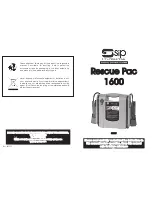
GB
- 19 -
Position 0:
No pendulum action
Material:
Rubber, ceramic, aluminium, steel
Please note:
For
fi
ne and clean cuts, thin materi-
als (e.g. sheet steel) and hard materials.
Position 1:
Small pendulum action
Material:
Plastic, wood, aluminium
Please note:
For hard materials
Position 2:
Medium pendulum action
Material:
Wood
Position 3:
Large pendulum action
Material:
Wood
Please note:
For soft materials and sawing along
the grain
The best combination of speed and pendulum
action depends on the material you wish to saw.
We recommend you to make a trial cut on a waste
piece in order to check the ideal settings.
6.5 Making cuts
•
Ensure that the ON/OFF switch (3) is not
depressed. Only then should you connect the
mains plug to a suitable socket.
•
Do not switch on the jigsaw until you have
fitted a saw blade.
•
Use only saw blades that are in perfect con-
dition. Replace blunt, bent or cracked saw
blades immediately.
•
Place the saw foot flat on the workpiece you
wish to saw. Switch on the jigsaw.
•
Allow the saw blade to accelerate until it
reaches full speed. Then slowly move the saw
blade along the cutting line. Only exert gentle
pressure on the saw blade as you do so.
•
When cutting metal, apply a suitable coolant
along the line you wish to cut.
6.6 Sawing out sections (Fig. 8)
Drill a 10 mm hole in the section you wish to saw
out. Insert the saw blade into this hole and start to
saw out the required section.
6.7 Making miter cuts
•
Set the angle on the soleplate (see section
5.3).
•
Observe the instructions in section 6.5.
•
Cut as shown in Figure 9.
7. Replacing the power cable
Danger!
If the power cable for this equipment is damaged,
it must be replaced by the manufacturer or its
after-sales service or similarly trained personnel
to avoid danger.
8. Cleaning, maintenance and
ordering of spare parts
Danger!
Always pull out the mains power plug before star-
ting any cleaning work.
8.1 Cleaning
•
Keep all safety devices, air vents and the
motor housing free of dirt and dust as far as
possible. Wipe the equipment with a clean
cloth or blow it with compressed air at low
pressure.
•
We recommend that you clean the device
immediately each time you have finished
using it.
•
Clean the equipment regularly with a moist
cloth and some soft soap. Do not use
cleaning agents or solvents; these could at-
tack the plastic parts of the equipment. Ensu-
re that no water can seep into the device. The
ingress of water into an electric tool increases
the risk of an electric shock.
8.2 Carbon brushes
In case of excessive sparking, have the carbon
brushes checked only by a quali
fi
ed electrician.
Danger!
The carbon brushes should not be rep
laced by anyone but a quali
fi
ed electrician.
8.3 Maintenance
There are no parts inside the equipment which
require additional maintenance.
Anl_TC_JS_80_1_SPK1.indb 19
14.02.2017 13:34:41
www.sidirika-nikolaidi.gr
















































